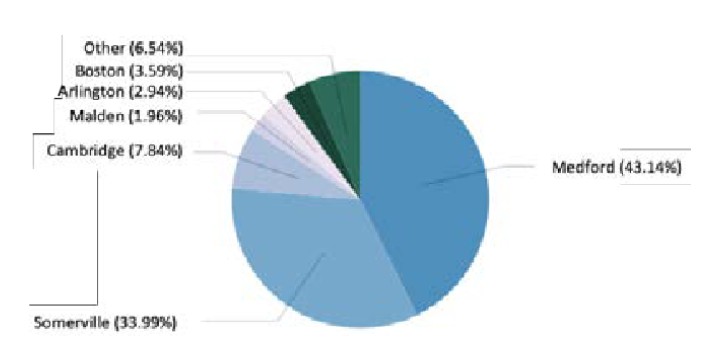Data Visualization Workshop
Data do not speak for themselves

Marine reservoir effect data from calib.org
Why visualize?
Visualization helps to identify patterns and structures in data that are not evident from tables or numerical summaries.
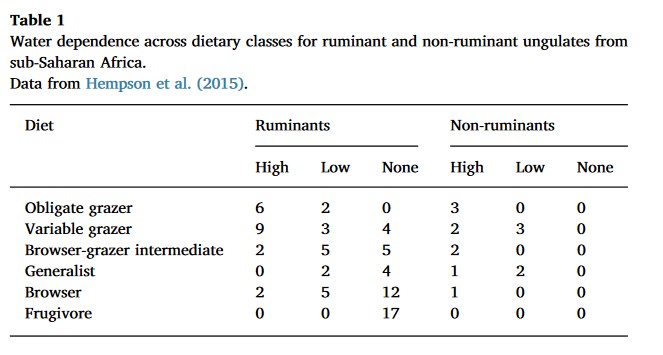
Faith, J. Tyler. 2018. “Paleodietary Change and Its Implications for Aridity Indices Derived from δ18O of Herbivore Tooth Enamel.” https://doi.org/10.1016/j.palaeo.2017.11.045.
Why visualize?
Mean x: 9
Mean y: 7.5
Pearson correlation coefficient (r): 0.816
Coefficient of determination (R2): 0.67
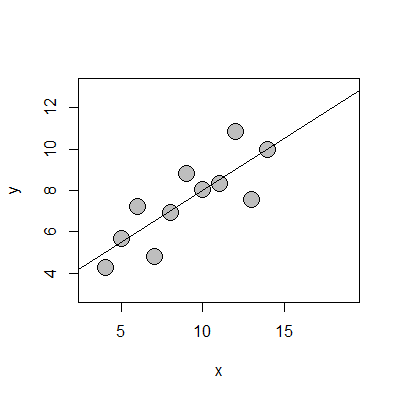
Why visualize?

Avenue, CC BY-SA 3.0 <https://creativecommons.org/licenses/by-sa/3.0>, via Wikimedia Commons
Why visualize?
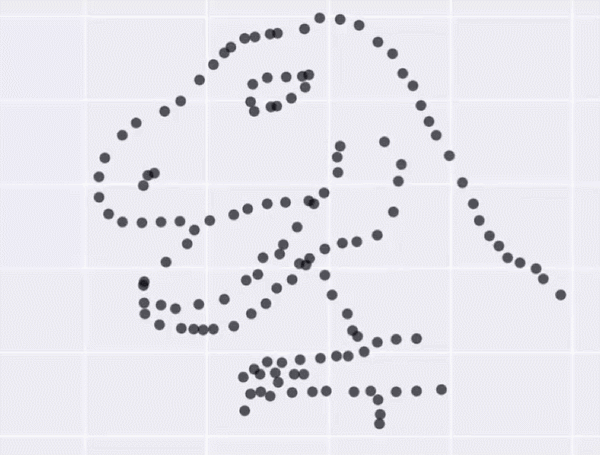
Matejka and Fitzmaurice, 2017. “Same Stats, Different Graphs: Generating Datasets with Varied Appearance and Identical Statistics through Simulated Annealing.” https://doi.org/10.1145/3025453.3025912.
Making a data visualization
Visualizing data involves aesthetic mapping: connecting variables in data to visual elements within a graphing space.
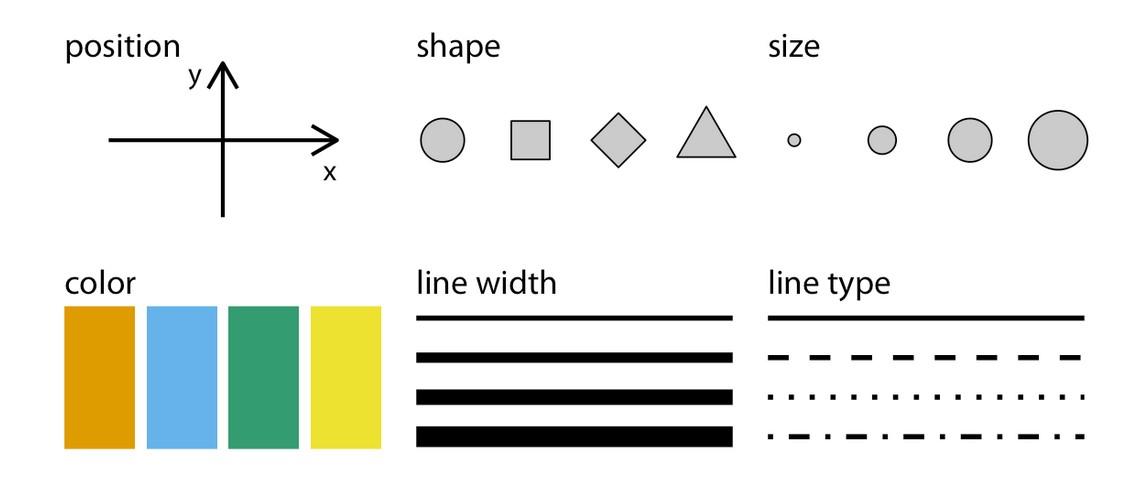
Wilke, C. 2019. Fundamentals of Data Visualization
Aesthetic mapping
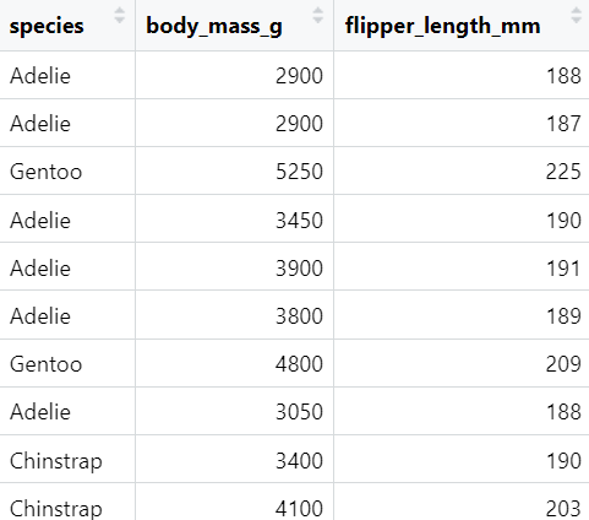
Aesthetic mapping
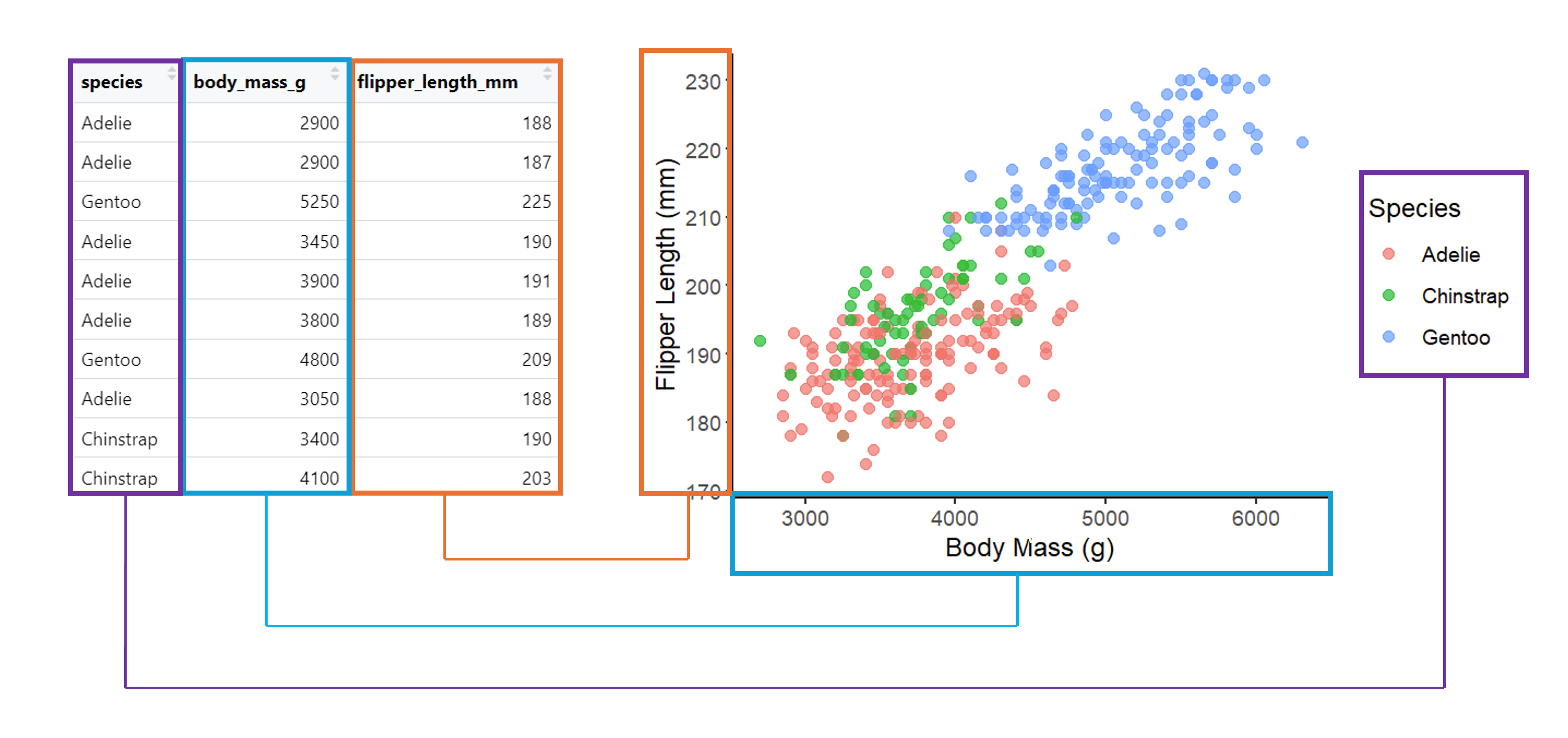
Aesthetic mapping
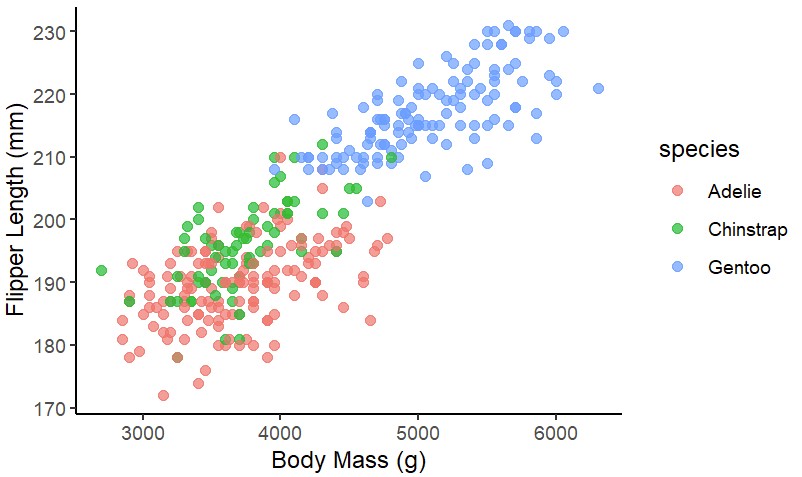
Making better visualizations
Good visualizations can help a reader to better understand data and your interpretation of it.
Choose the right chart for the data
Maximize the data-to-ink ratio
Make deliberate design decisions
What kind of visualization?
The type of visualization that should be used depends on the kind of information being conveyed.
What kind of visualization?
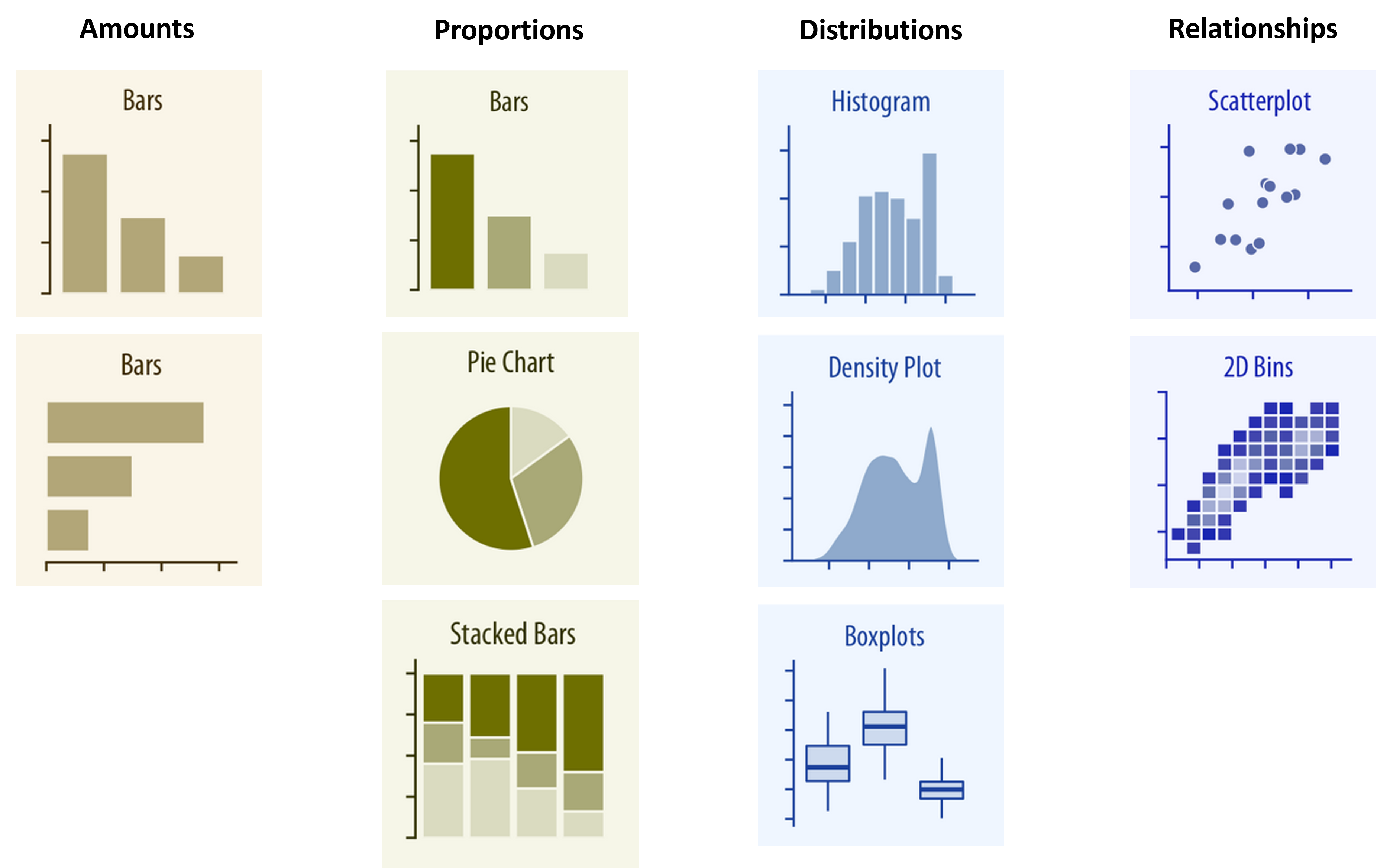
Wilke, Claus. 2019. Fundamentals of Data Visualization
Bar charts and histograms
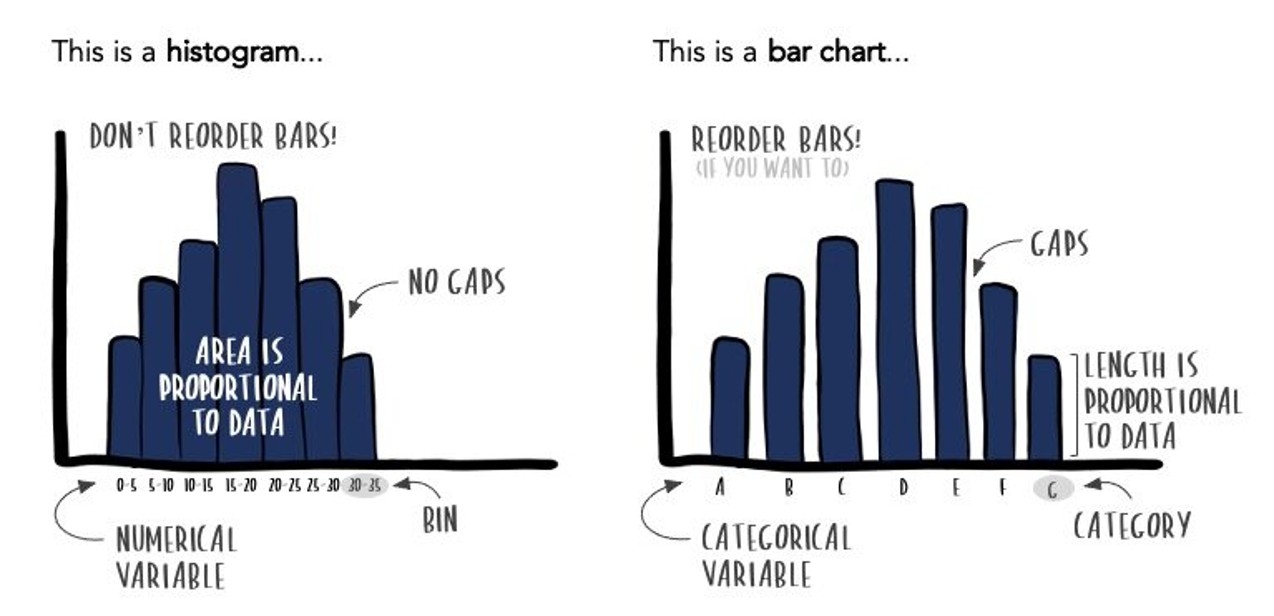
https://www.storytellingwithdata.com/blog/2021/1/28/histograms-and-bar-charts
When not to use a pie chart
When you have a large number of categories
When you need to compare more than one chart
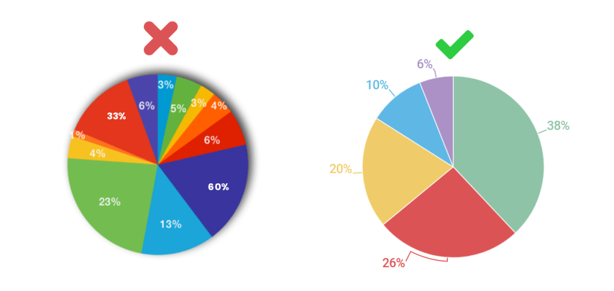
Data-ink
Data-ink (per Tufte 19831) refers to ink (or pixels) that, if erased, would reduce the information being presented.
Ideally, we want to maximize the ratio of data to ink.
Data-ink
Visualization with non-data ink.
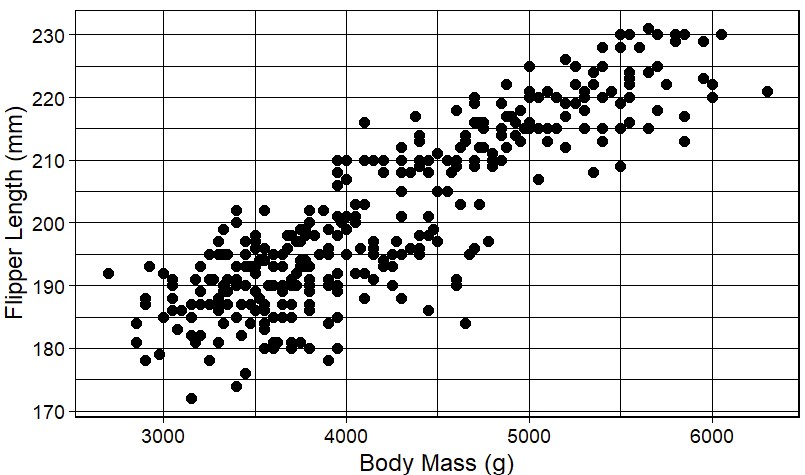
Data-ink
Removing some non-data ink.
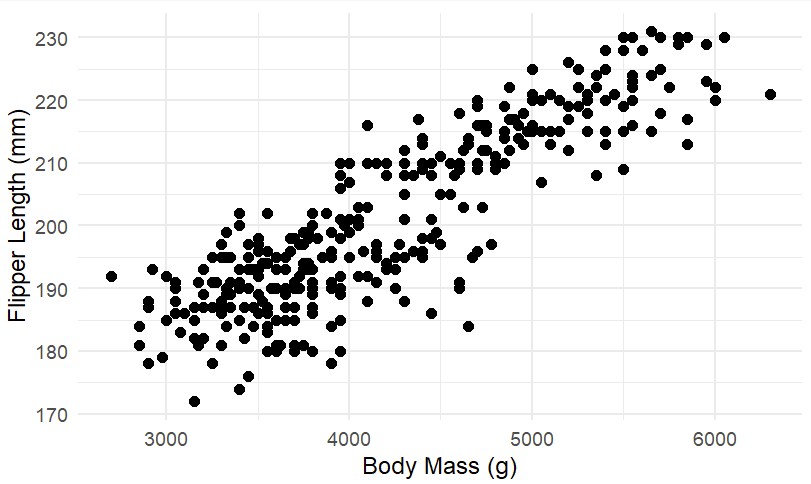
Data-ink
Removing too much non-data ink?
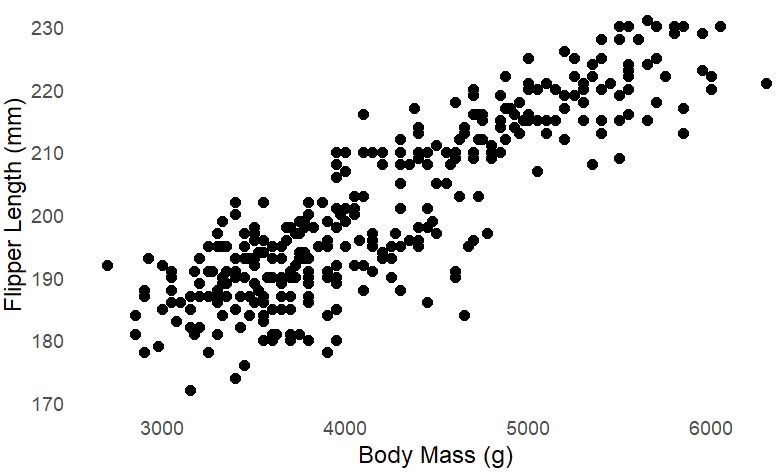
Activity: To erase or not to erase?
/simplexct/images/image-tfe54.png)
Activity: To erase or not to erase?
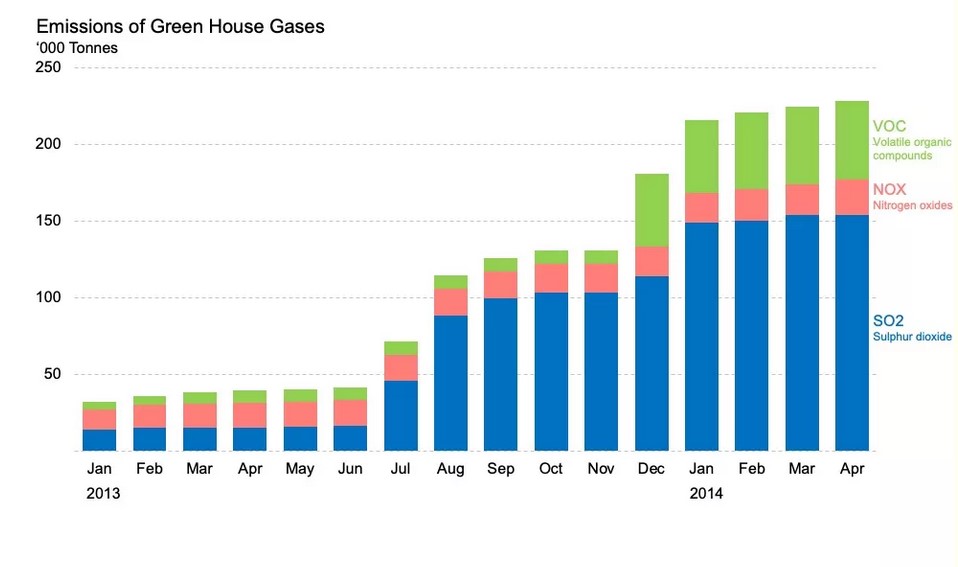
Being deliberate about design
How does a design choice help someone understand the data?
Contrast: Do the visual elements provide adequate contrast to discern between them?
Clarity: Is the way the data are displayed making it possible to see it’s structure?
Highlighting: Should I use graphical elements to highlight the aspects I think are important?
Labeling: Is the labeling clear enough?
Contrast is clarity
Be sure foreground (plotting) colors are sufficiently different from background colors to aid readability.
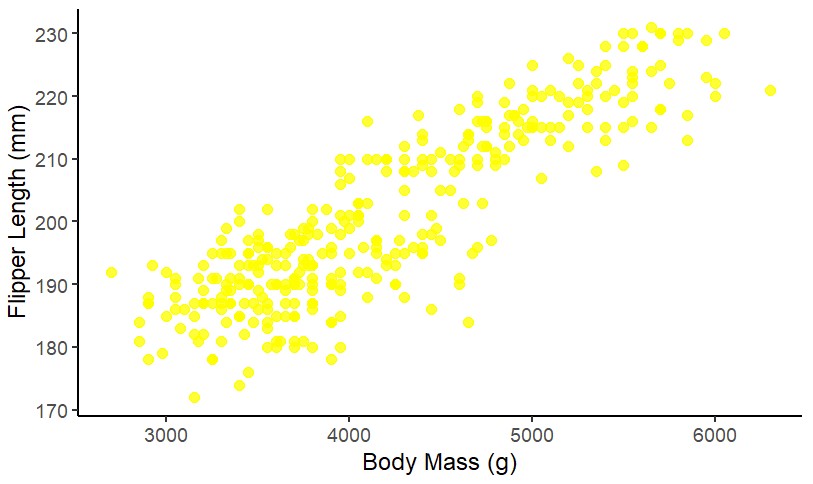
Contrast is clarity
When using colors, symbols, or line styles, be sure these are sufficiently different to distinguish between categories.
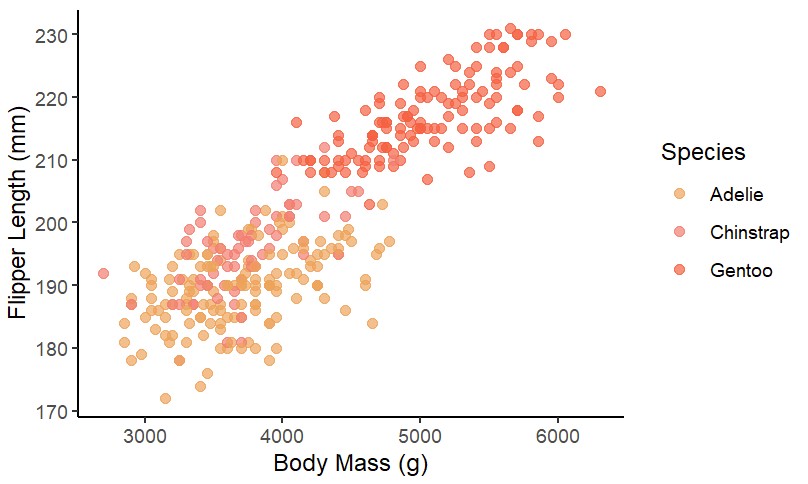
Using color effectively
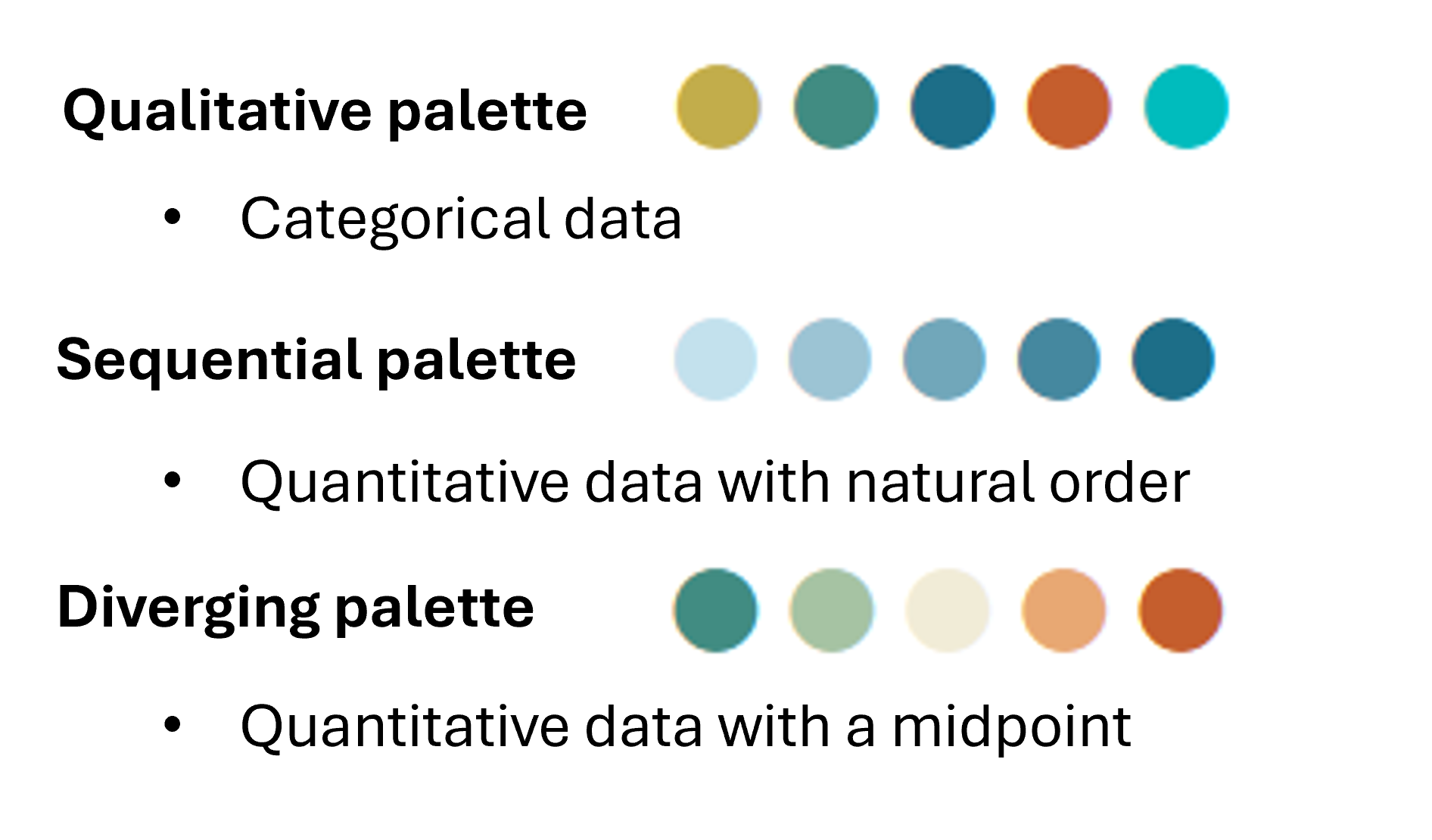
Accessibility considerations
Some design choices affect some audiences more than others
Color palette
Text and symbol sizes

Wilke, Claus. 2019. Fundamentals of Data Visualization
Improving readability
Small symbol and label sizes are difficult to read and leave too much white space
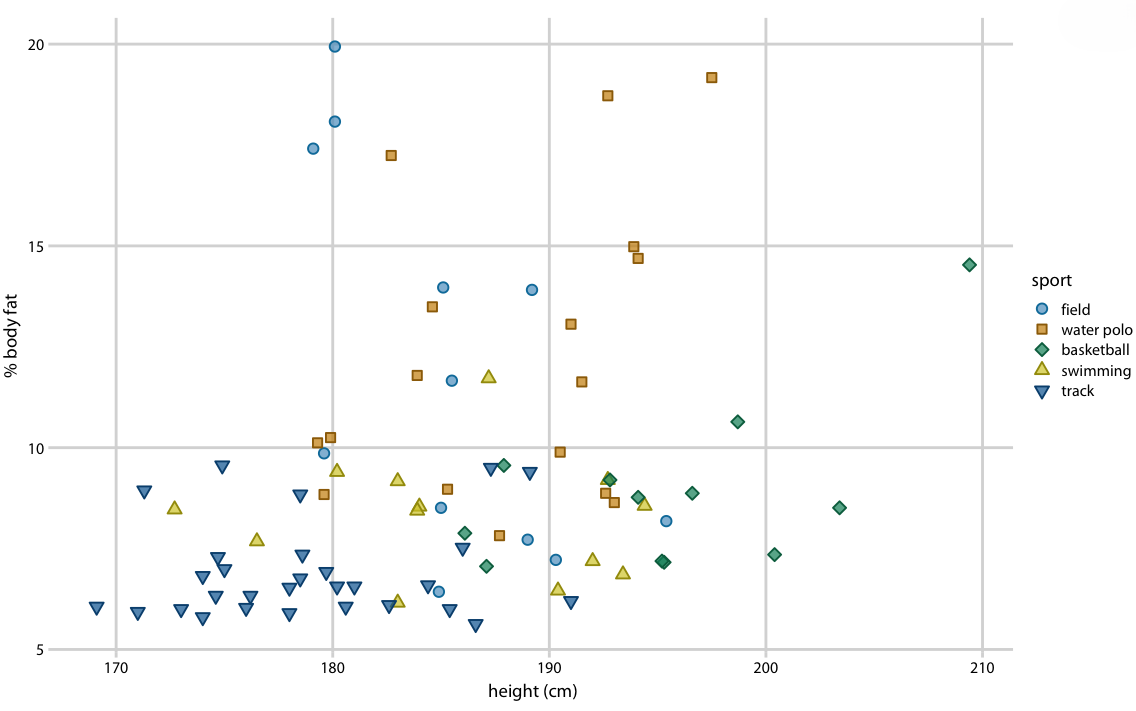
Wilke, Claus. 2019. Fundamentals of Data Visualization
Improving readability
Generally speaking, aim for larger text and point sizes.
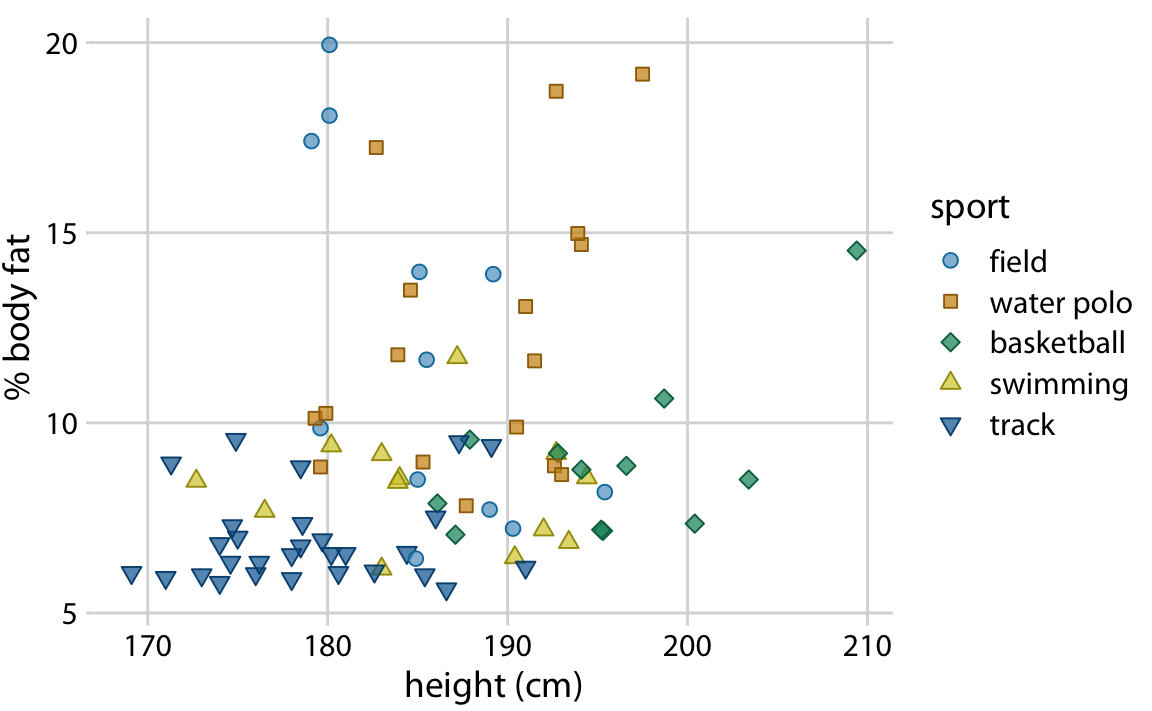
Wilke, Claus. 2019. Fundamentals of Data Visualization
Getting a clearer view
Large datasets pose challenges for representing their structure in two dimensions.
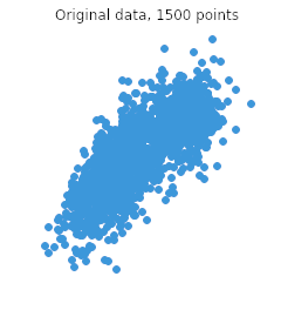
atlassian.com/data/charts/what-is-a-scatter-plot
Getting a clearer view
Consider ways to illustrate frequency across the dataset
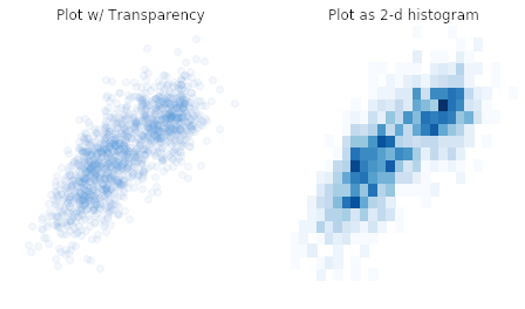
atlassian.com/data/charts/what-is-a-scatter-plot
Drawing the eye to the headline
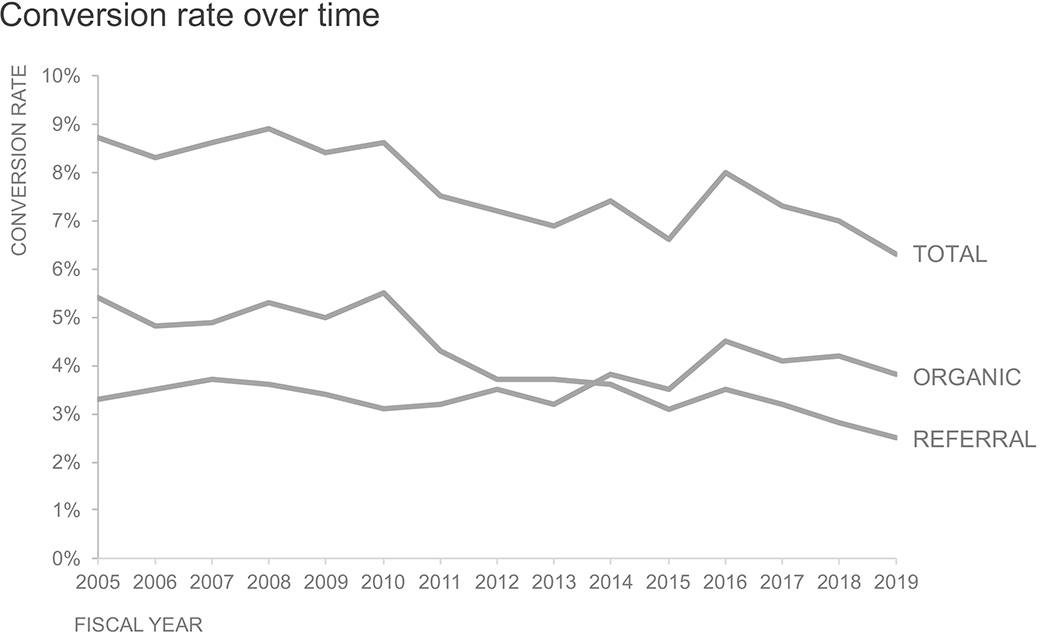
Knaflic, Cole Nussbaumer. 2019. Storytelling with Data. New York: Wiley.
Drawing the eye to the headline
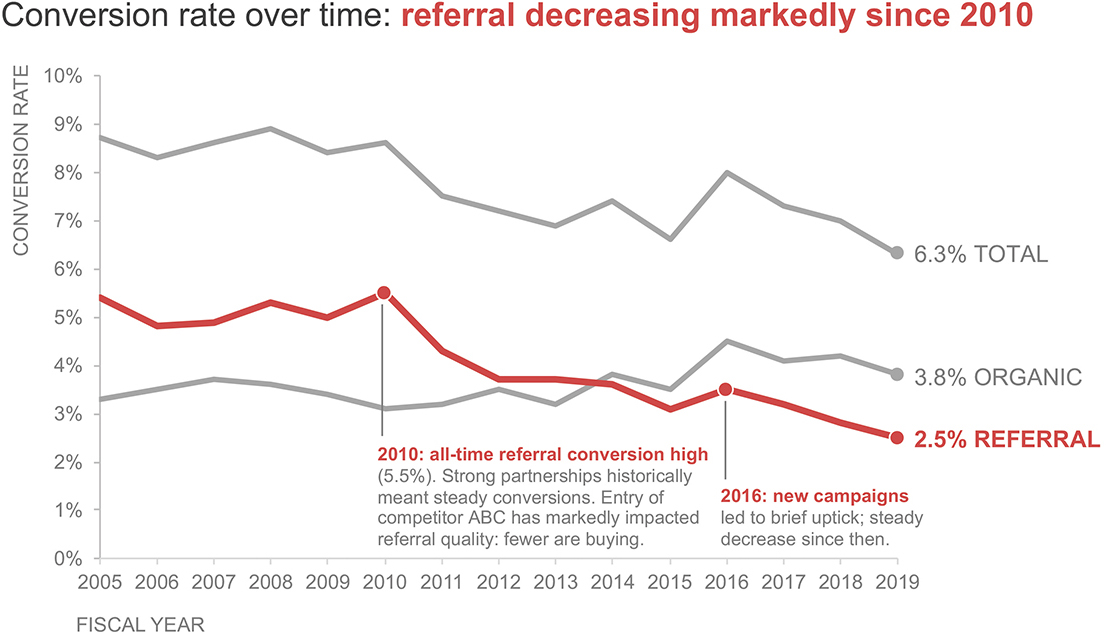
Knaflic, Cole Nussbaumer. 2019. Storytelling with Data. New York: Wiley.
Avoid being deliberately misleading
Changing the aspect ratio of the graphing space can give the impression that a patterns is more or less dramatic than it s.

https://eagereyes.org/blog/2013/banking-45-degrees
Avoid being deliberately misleading
Bar charts are used for comparing amounts; zooming in on the region of interest can exaggerate differences.

https://eagereyes.org/blog/2013/baselines
Avoid being deliberately misleading
What’s wrong here?
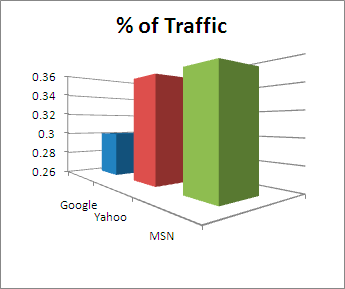
https://infolific.com/technology/internet/seo-lie-factor/
Image file formats
There are two main types of image formats
Bitmap (also known as raster)
Vector
Bitmap vs Vector
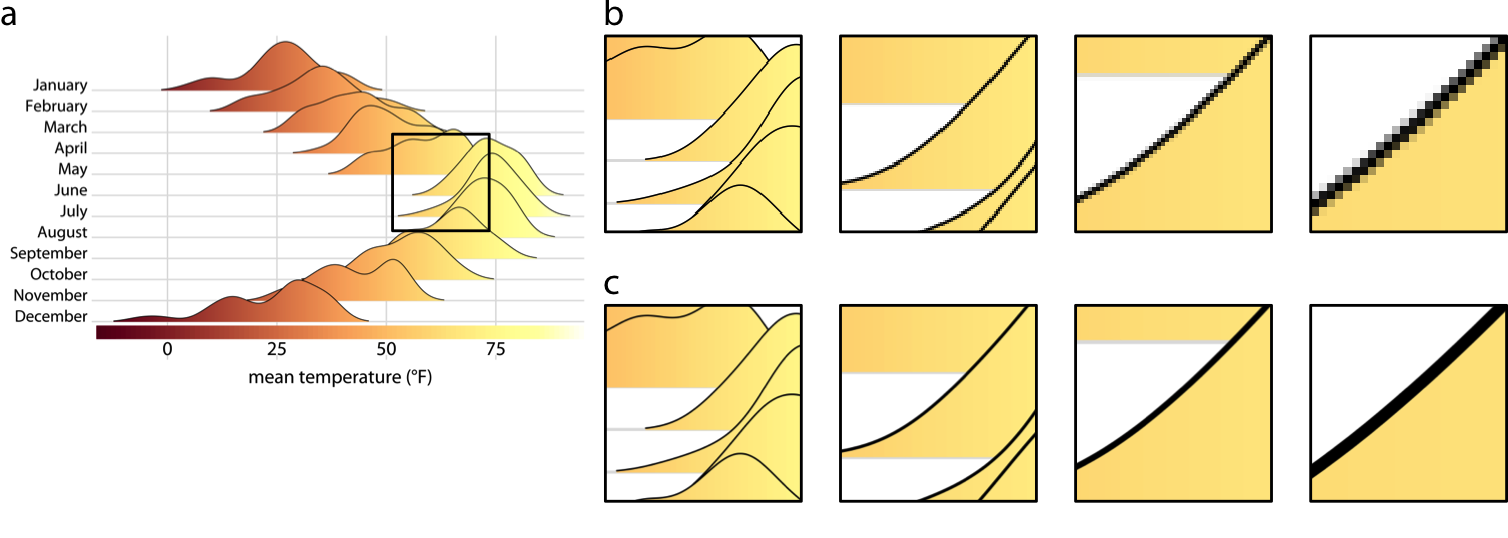
Wilke, C. 2019. Fundamentals of Data Visualization
Bitmap vs Vector

Wilke, C. 2019. Fundamentals of Data Visualization
Bitmap vs Vector
Bitmap
Sharpness depends on resolution and size
Consistent appearance across platforms
Best for complex images (photos, large numbers of elements)
Vector
Sharpness is scale-independent
Can look differently using different programs
Best for simple images (line drawings, simple graphs)
Image file formats
| File Extension | Type | Use For |
|---|---|---|
| .jpg | Bitmap | Photos |
| .png | Bitmap | Line Drawings |
| .tif | Bitmap | |
| .svg | Vector | Line drawings (online) |
| Vector | General purpose |
The big picture
Visualization is foremost about making data more understandable
Guidelines like maximizing data-ink and being deliberate about design help us make decisions that will facilitate this goal
Being conscientious about your audience and your medium will help make your graphic useful to more people
Helpful resources
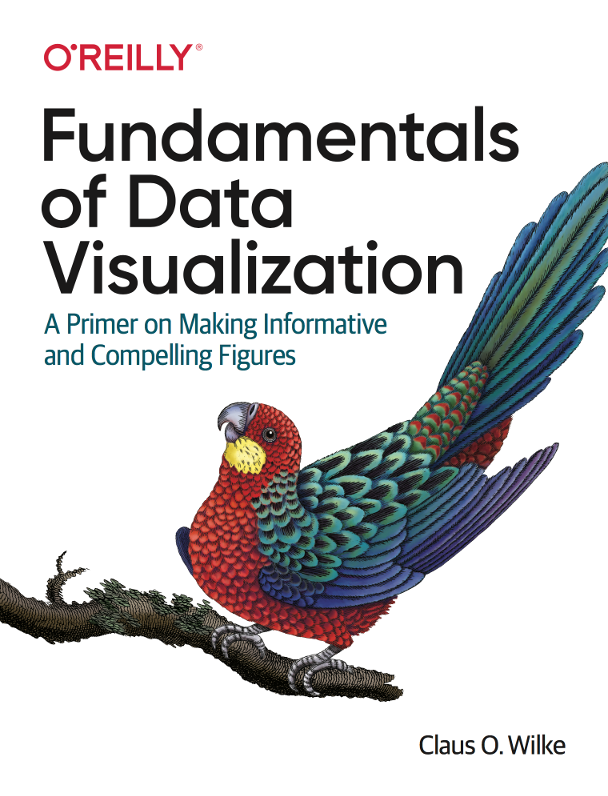
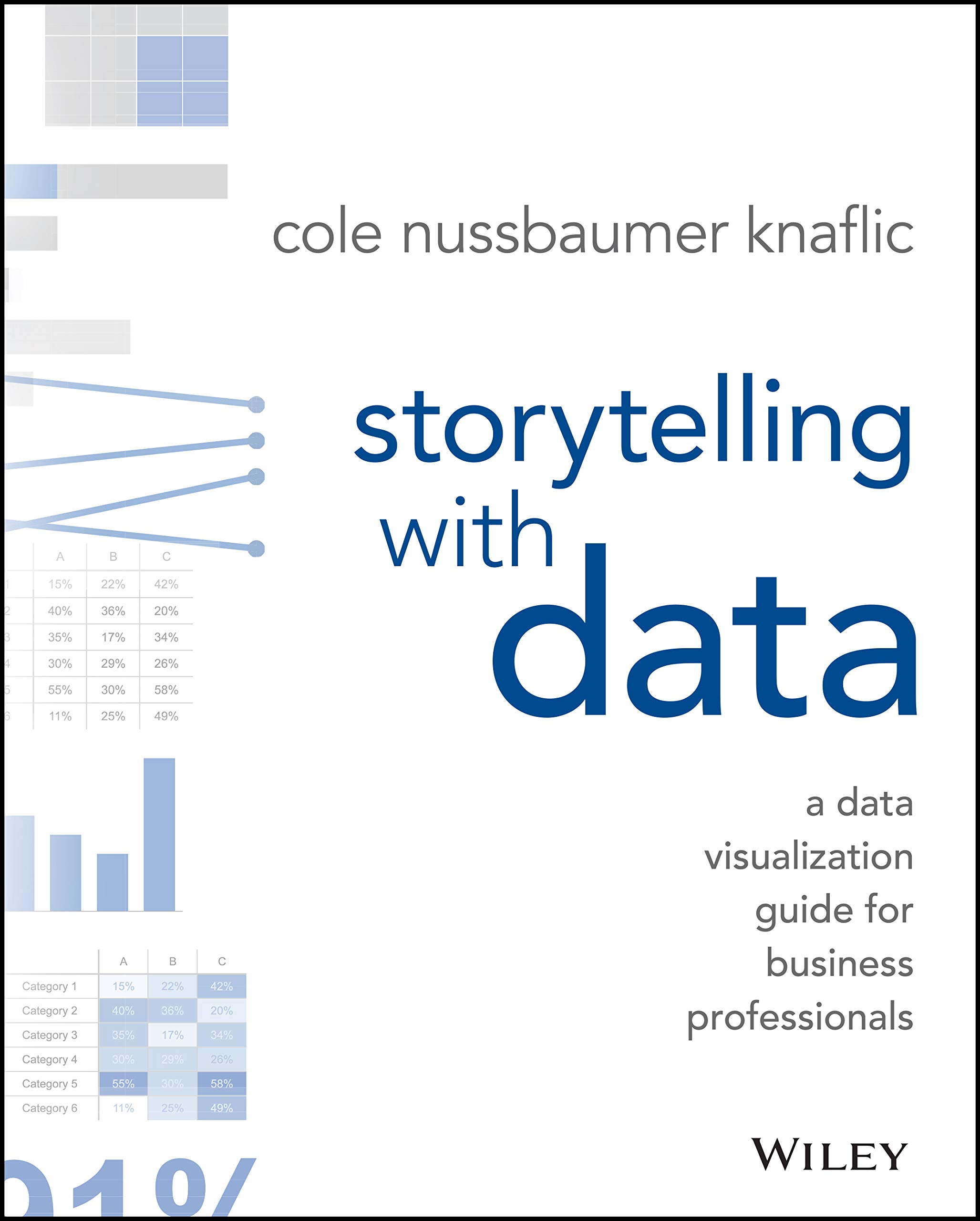
Additional tools
For choosing the right chart, try Chart Doctor’s Visual Vocabulary
For evaluating color palettes, try ColorBrewer
For assessing color accessibility in existing graphs, try Color Oracle
Want to learn more?
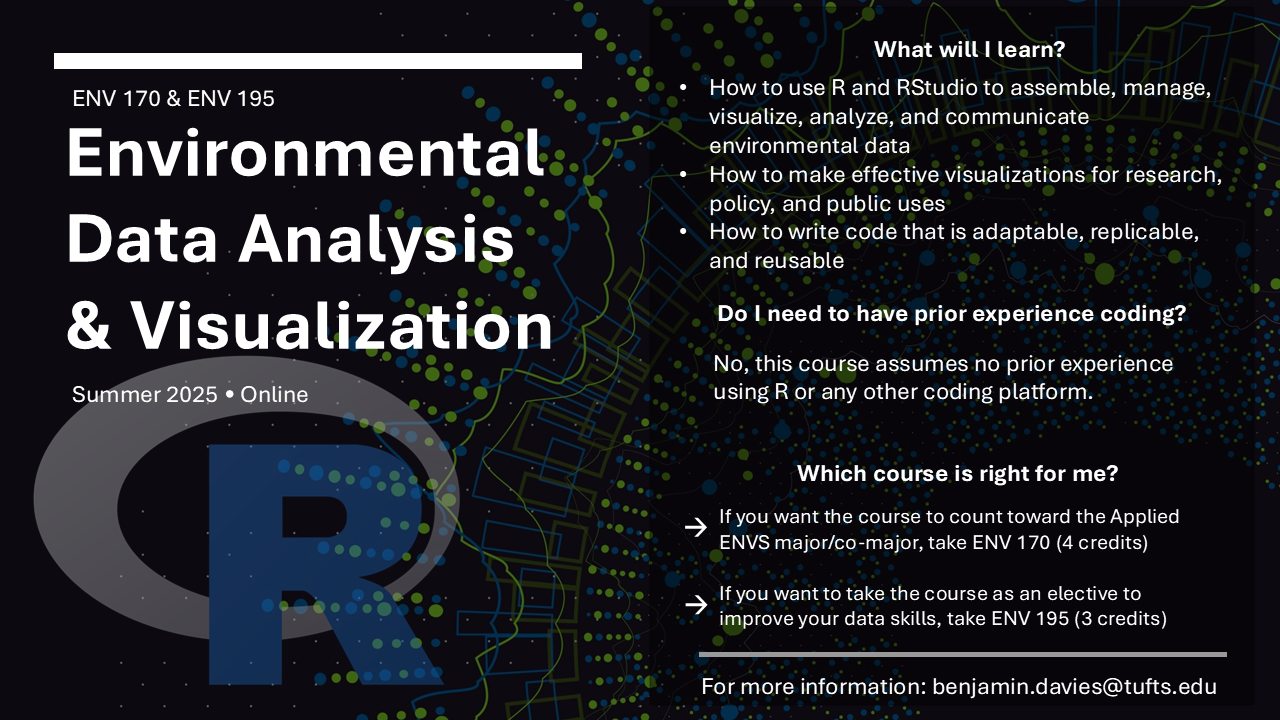
Thank you!
Examples from past field projects
Example 1
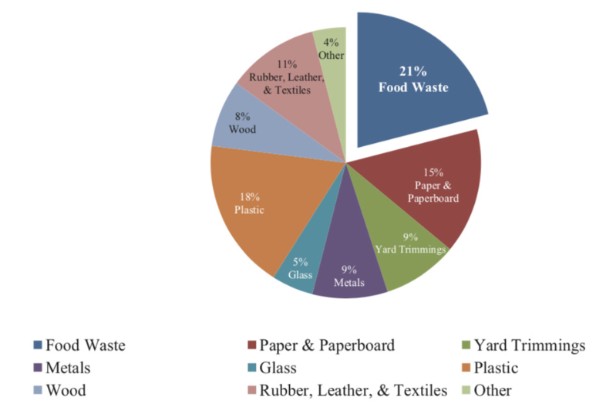
Example 2
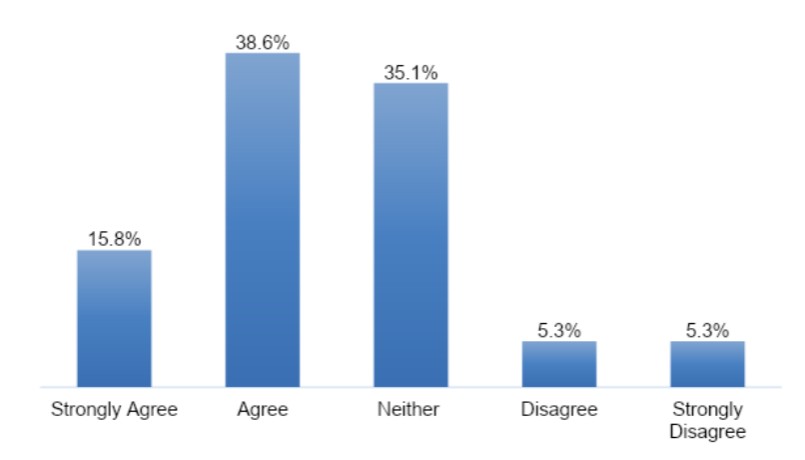
Example 3
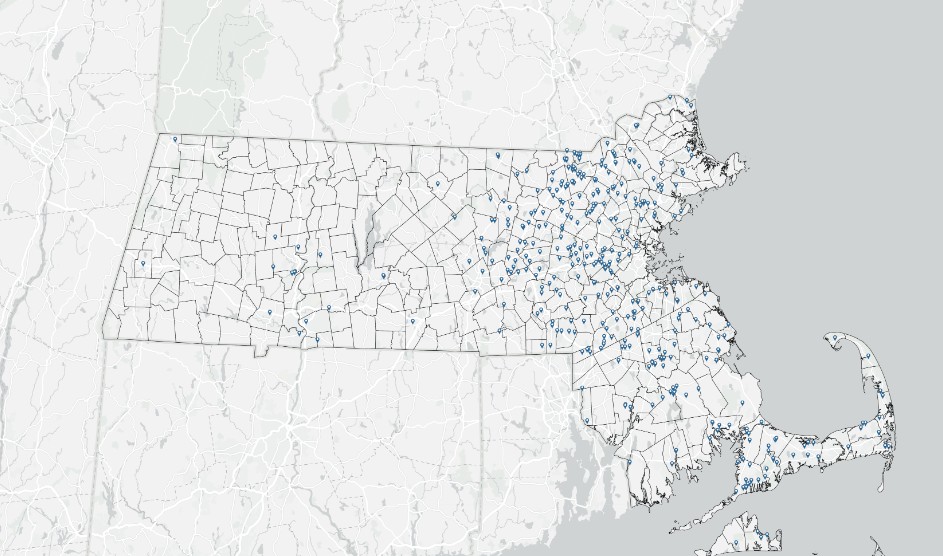
Example 4
